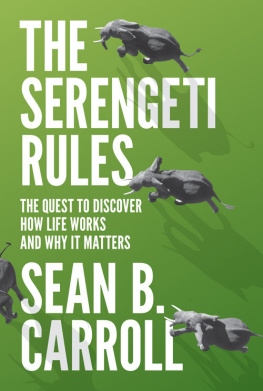Manuel Gutierrez - Where Is the Serengeti?
Here you can read online Manuel Gutierrez - Where Is the Serengeti? full text of the book (entire story) in english for free. Download pdf and epub, get meaning, cover and reviews about this ebook. year: 2019, publisher: Penguin Young Readers Group, genre: History. Description of the work, (preface) as well as reviews are available. Best literature library LitArk.com created for fans of good reading and offers a wide selection of genres:
Romance novel
Science fiction
Adventure
Detective
Science
History
Home and family
Prose
Art
Politics
Computer
Non-fiction
Religion
Business
Children
Humor
Choose a favorite category and find really read worthwhile books. Enjoy immersion in the world of imagination, feel the emotions of the characters or learn something new for yourself, make an fascinating discovery.
- Book:Where Is the Serengeti?
- Author:
- Publisher:Penguin Young Readers Group
- Genre:
- Year:2019
- Rating:4 / 5
- Favourites:Add to favourites
- Your mark:
- 80
- 1
- 2
- 3
- 4
- 5
Where Is the Serengeti?: summary, description and annotation
We offer to read an annotation, description, summary or preface (depends on what the author of the book "Where Is the Serengeti?" wrote himself). If you haven't found the necessary information about the book — write in the comments, we will try to find it.
Where Is the Serengeti? — read online for free the complete book (whole text) full work
Below is the text of the book, divided by pages. System saving the place of the last page read, allows you to conveniently read the book "Where Is the Serengeti?" online for free, without having to search again every time where you left off. Put a bookmark, and you can go to the page where you finished reading at any time.
Font size:
Interval:
Bookmark:
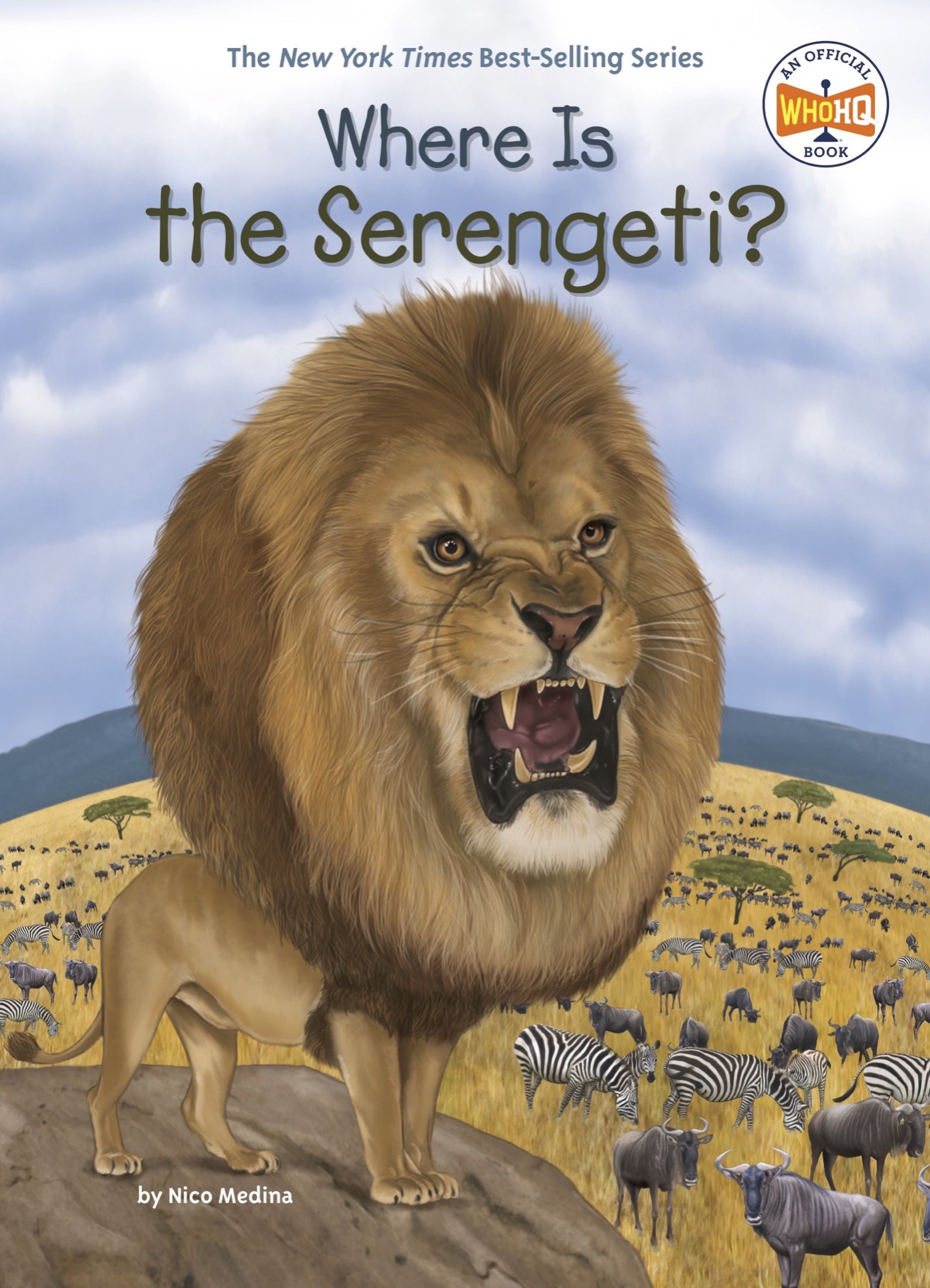
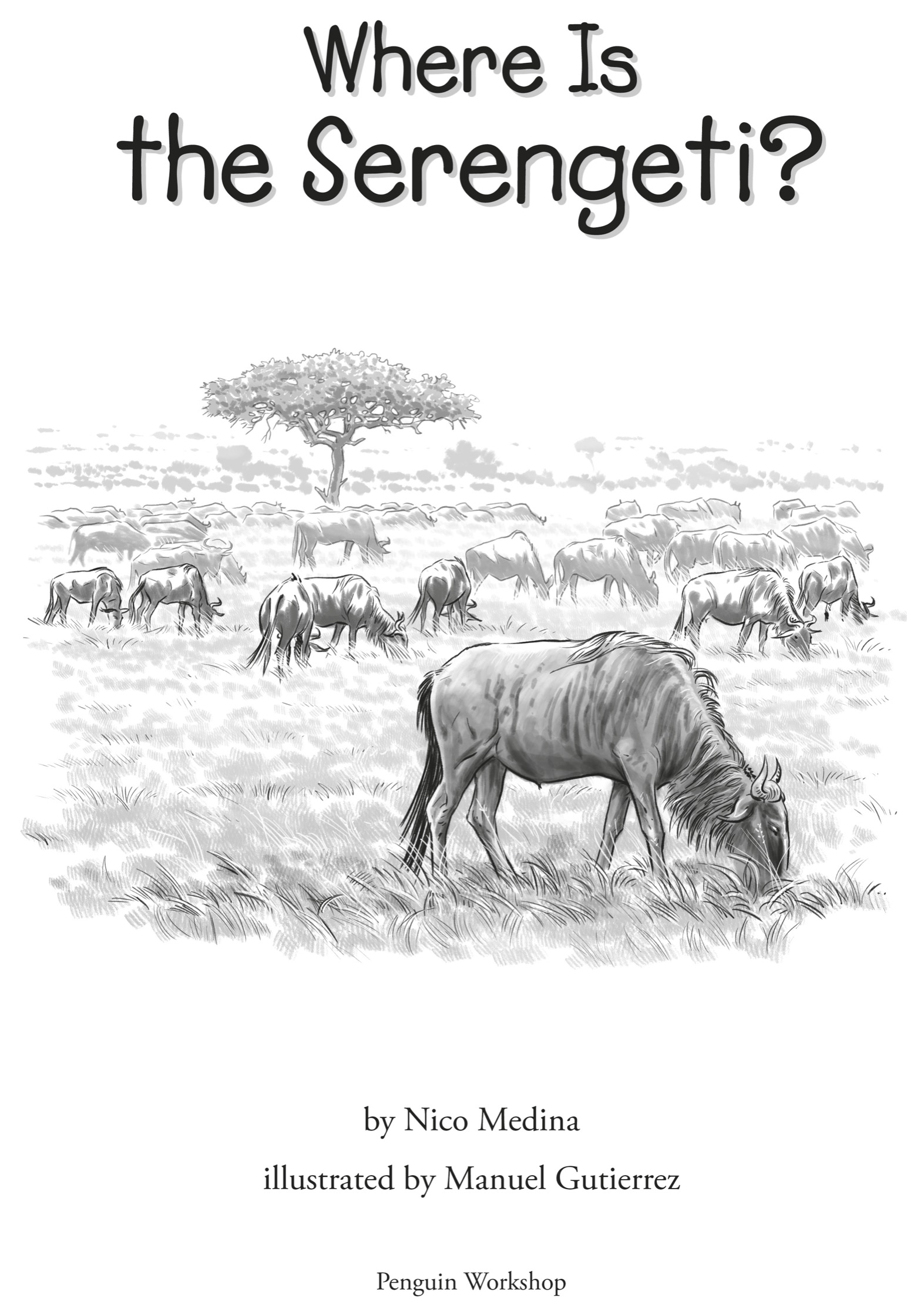
For the Hamilton cubs: Cameron, Colin, and CooperNM
Para vosMG
PENGUIN WORKSHOP
An Imprint of Penguin Random House LLC, New York

Penguin supports copyright. Copyright fuels creativity, encourages diverse voices, promotes free speech, and creates a vibrant culture. Thank you for buying an authorized edition of this book and for complying with copyright laws by not reproducing, scanning, or distributing any part of it in any form without permission. You are supporting writers and allowing Penguin to continue to publish books for every reader.
The publisher does not have any control over and does not assume any responsibility for author or third-party websites or their content.
Copyright 2019 by Penguin Random House LLC. All rights reserved. Published by Penguin Workshop, an imprint of Penguin Random House LLC, New York. PENGUIN and PENGUIN WORKSHOP are trademarks of Penguin Books Ltd. WHO HQ & Design is a registered trademark of Penguin Random House LLC.
Visit us online at www.penguinrandomhouse.com.
Library of Congress Cataloging-in-Publication Data is available upon request.
ISBN 9781524792565 (paperback)
ISBN 9781524792572 (library binding)
ISBN 9781524792589 (ebook)
Version_1
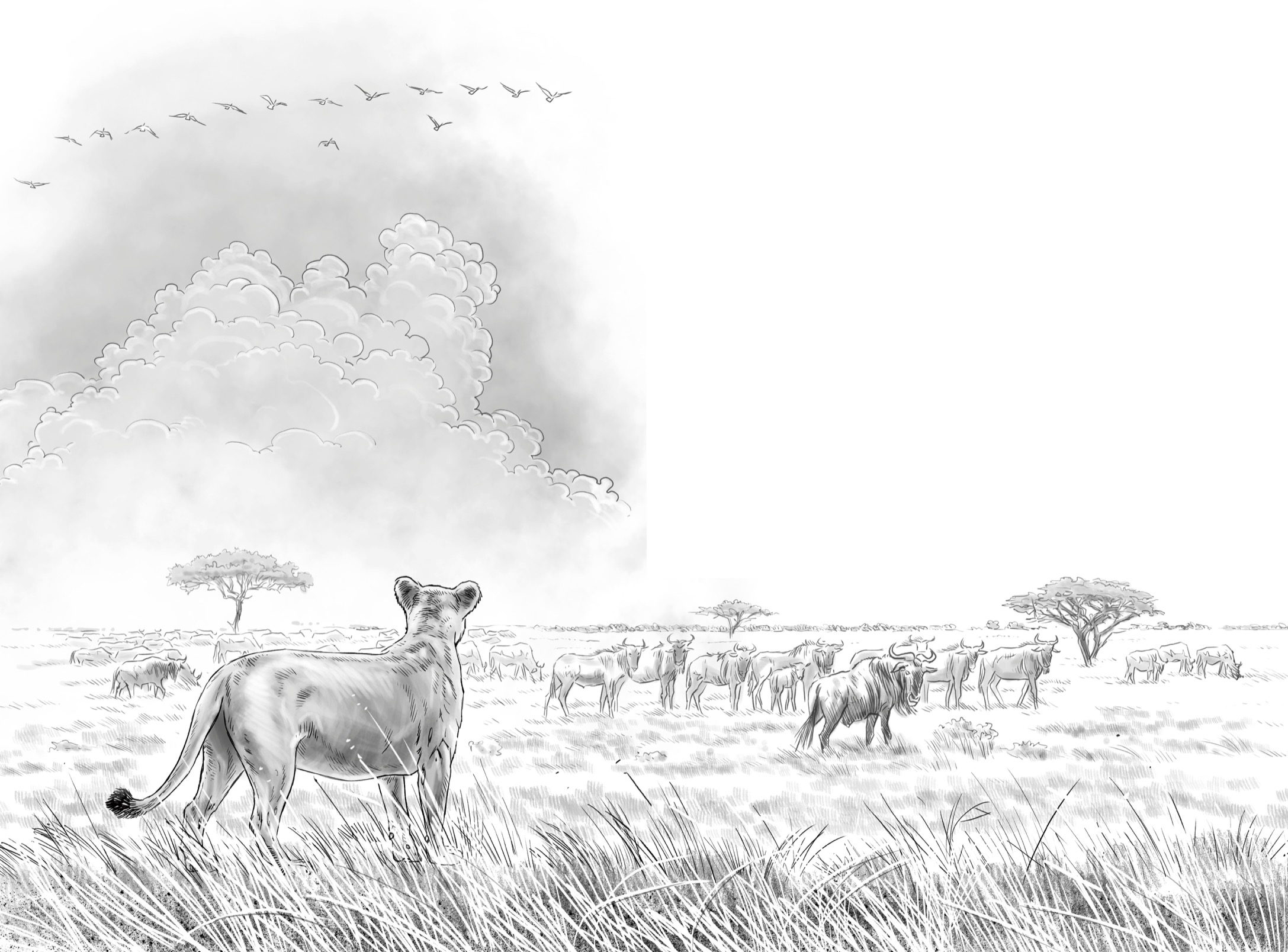
The lioness approaches the herd of wildebeests in plain sight. If she were hunting the wildebeests, she would crouch low and disappear into the tall grass. Her tan coat would help camouflage the lioness. (Camouflage means to blend in with her surroundings.)
But for right now, shes only watching the herd.
And the herd watches her back. Nervously. The wildebeests walk on, all the while keeping an eye on the female lion.
The lioness cant outrun the wildebeests. In short bursts, lions can reach speeds of fifty miles per hour. But wildebeests can run that fast for a long time. So if the lioness is far away from the herd, the wildebeests will be safe. And if the lioness decides to charge them, theyll have plenty of time to run for their lives.
The lioness walks alongside the herd. Lions prefer to attack when their target is no more than a hundred feet away. With a good running start, they can leap as far as thirty-six feet! But this lioness doesnt want the wildebeests to panic and runat least not yet. For now, she wants to keep their attention on her. Slowly, she begins closing the distance between them.
The wildebeests notice, and turn to flee.
The lioness charges, running straight for the herd!
Shes too far back. Shell never catch up.
But on the other side of the herd, lying in wait in the tall grass, are two more lionesses. And the panicked wildebeests are running right toward them.
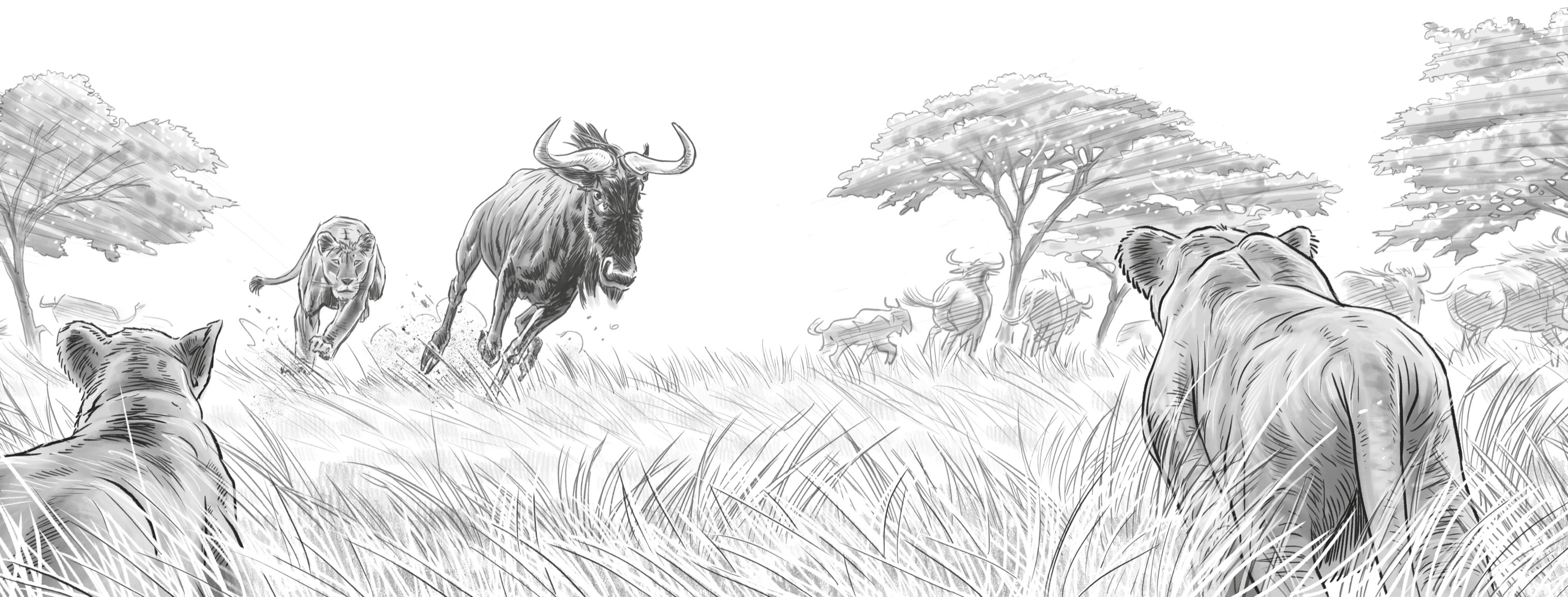
Suddenly, the other lionesses spring into action. They jump up into a run and select their target: a lone wildebeest that has separated from the herd.
The lioness that reaches the wildebeest first sinks her claws into its backside. The wildebeest bucks in an attempt to shake the lioness off, but its no use.
The wildebeest is one of the largest speciesor typesof antelope, weighing up to six hundred pounds. But the lioness is strong. The wildebeest is pulled to the ground. Now a second lioness arrives and delivers the killing blow: a sure and swift bite to the throat.
The wildebeests death may seem brutal. But lions and their cubs need meat to survive. Predators, like lions, must hunt and kill prey, like wildebeests.
As the lions feast on their fresh kill, smaller carnivores (meat eaters), like jackals, wait in the background. Vultures circle overhead. After the lions have had their fill, the jackals and the vultures will swarm in to fight over the scraps. Soon, the wildebeests bones will be picked clean.
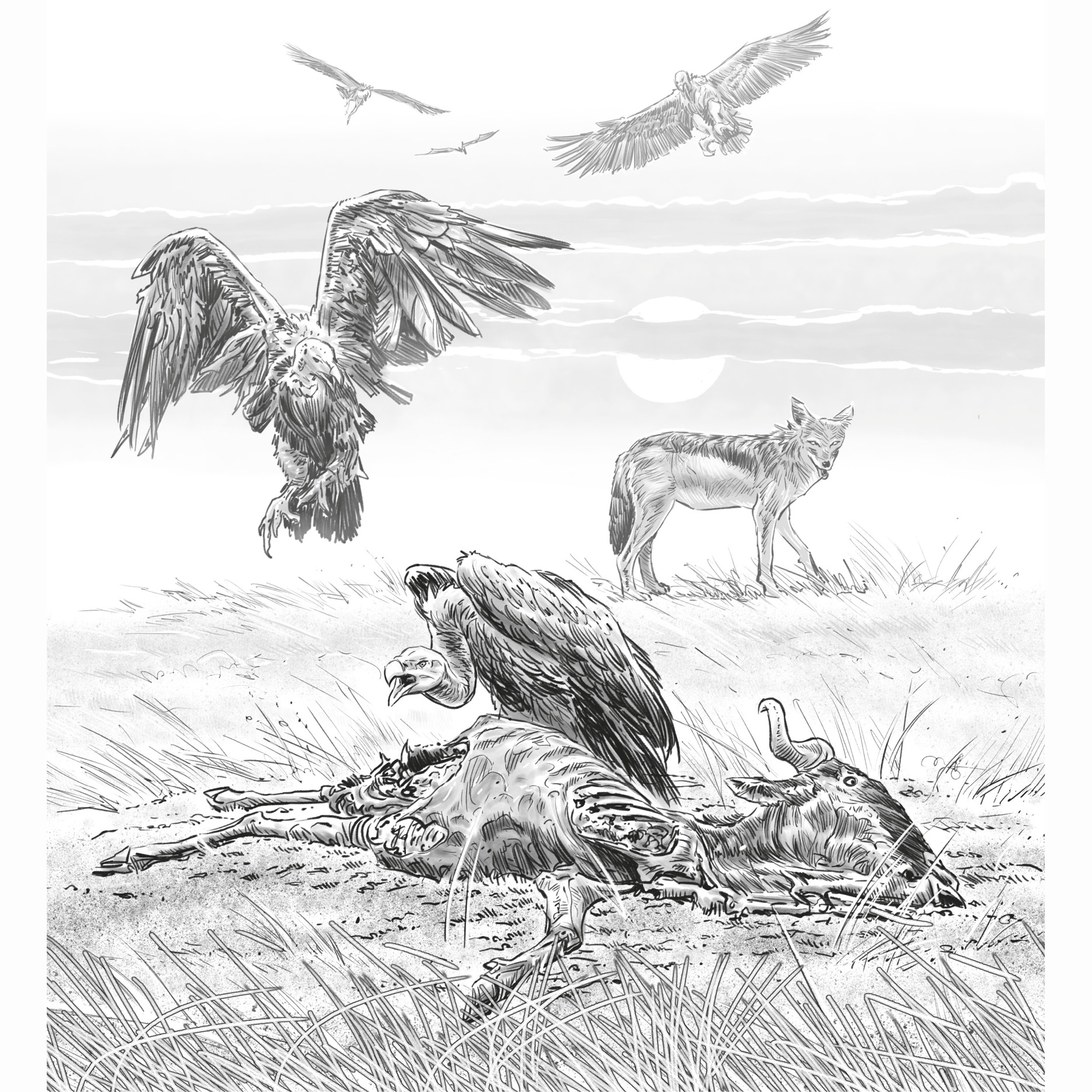
When survival is at stake, nothing goes to waste.
This is life in the Serengeti (say: sair-en-GET-ee), a wide, grassy plain in the east-central African nation of Tanzania. Serengeti National Park was established in 1951. It covers an area of 5,700 square milesabout the size of Connecticut.

Soon after the park was founded, elephants began moving back to the Serengeti. They had not been in the area for many years, having been driven out by hunters. Today, there are thousands of elephants on the Serengeti Plain. The area is also home to as many as two million wildebeests, four thousand lions, and a wide variety of other animals, including zebras, gazelles, giraffes, leopards, and hyenas.
With all these animals, the Serengeti holds the highest concentration of large game and predators on earth. (That means the greatest number of these animals are living in the smallest area.)
In 1981, the Serengeti was named a World Heritage Site by the United Nations. It is a place of outstanding universal value to humankind. The Grand Canyon in the United States and the Great Barrier Reef in Australia are other World Heritage Sites.
Today, no peopleexcept for a few scientists and park rangersare allowed to live in Serengeti National Park. It is a wild and special place, practically untouched by humans, and ruled by great beasts.
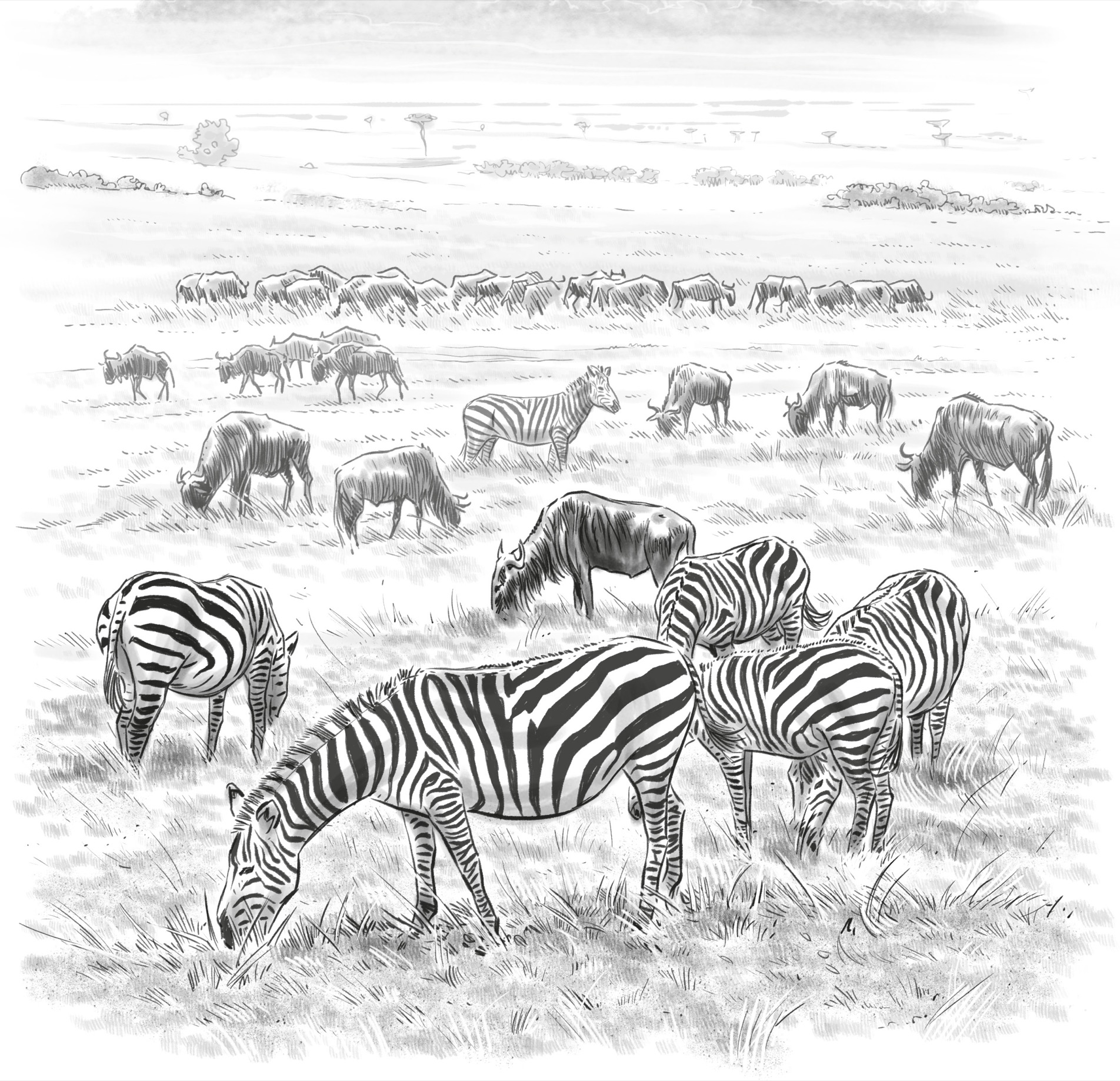
In the language of the local Maasai people (say: ma-SIGH), Serengeti means endless plains or extended place. The Maasai arrived here from Kenya, to the north, about three hundred years ago. They used the grasslands to graze their cattle.
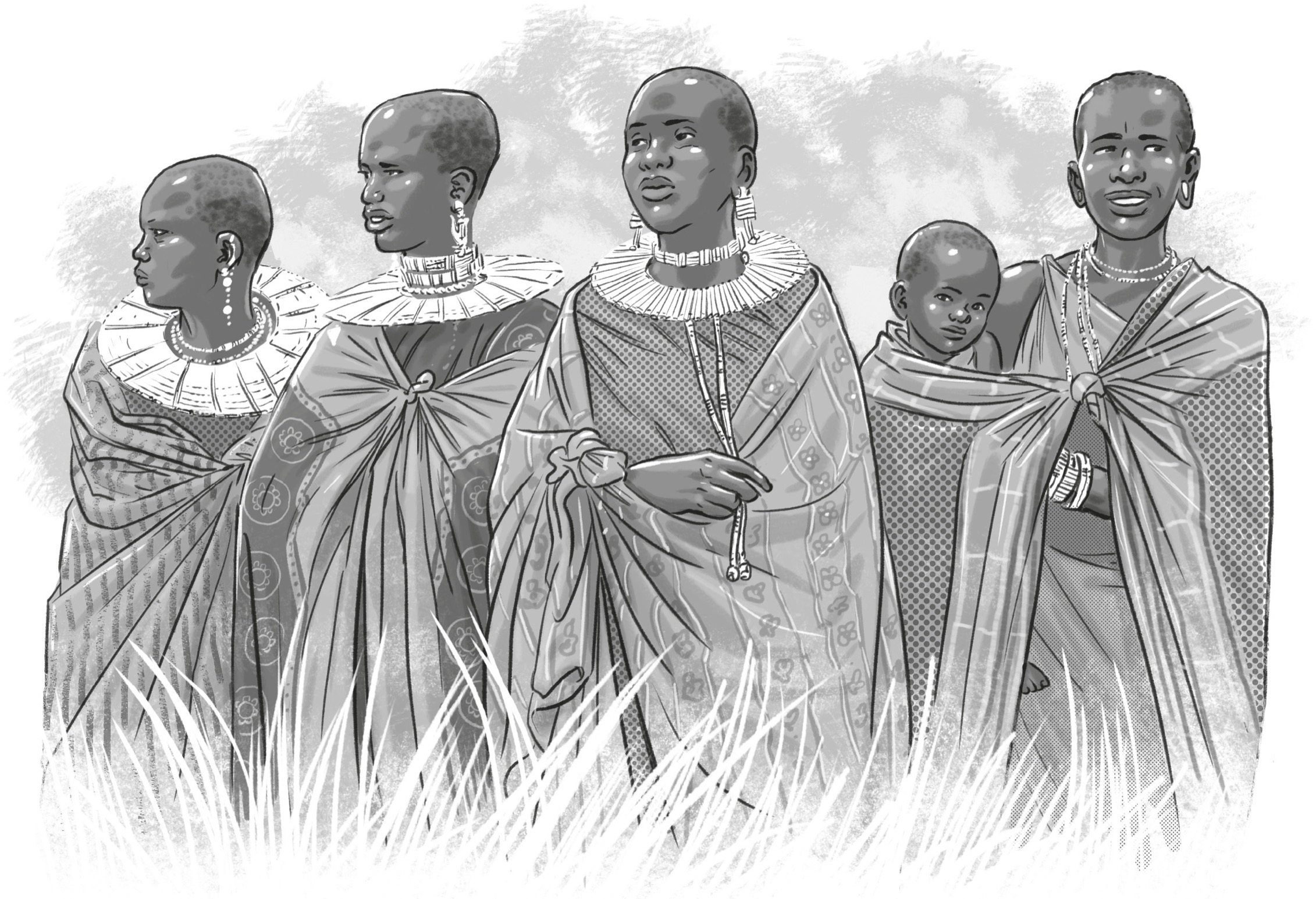
Maasai women
There are around two hundred species of grass on the Serengeti Plain. There are short grasslands in the south and east, with taller grasslands in the west. Millions of animalswildebeests, zebras, buffalograze here. A single elephant can eat six hundred pounds of grass in a day! The Serengetis vegetation feeds the largest herds of animals on the planet.
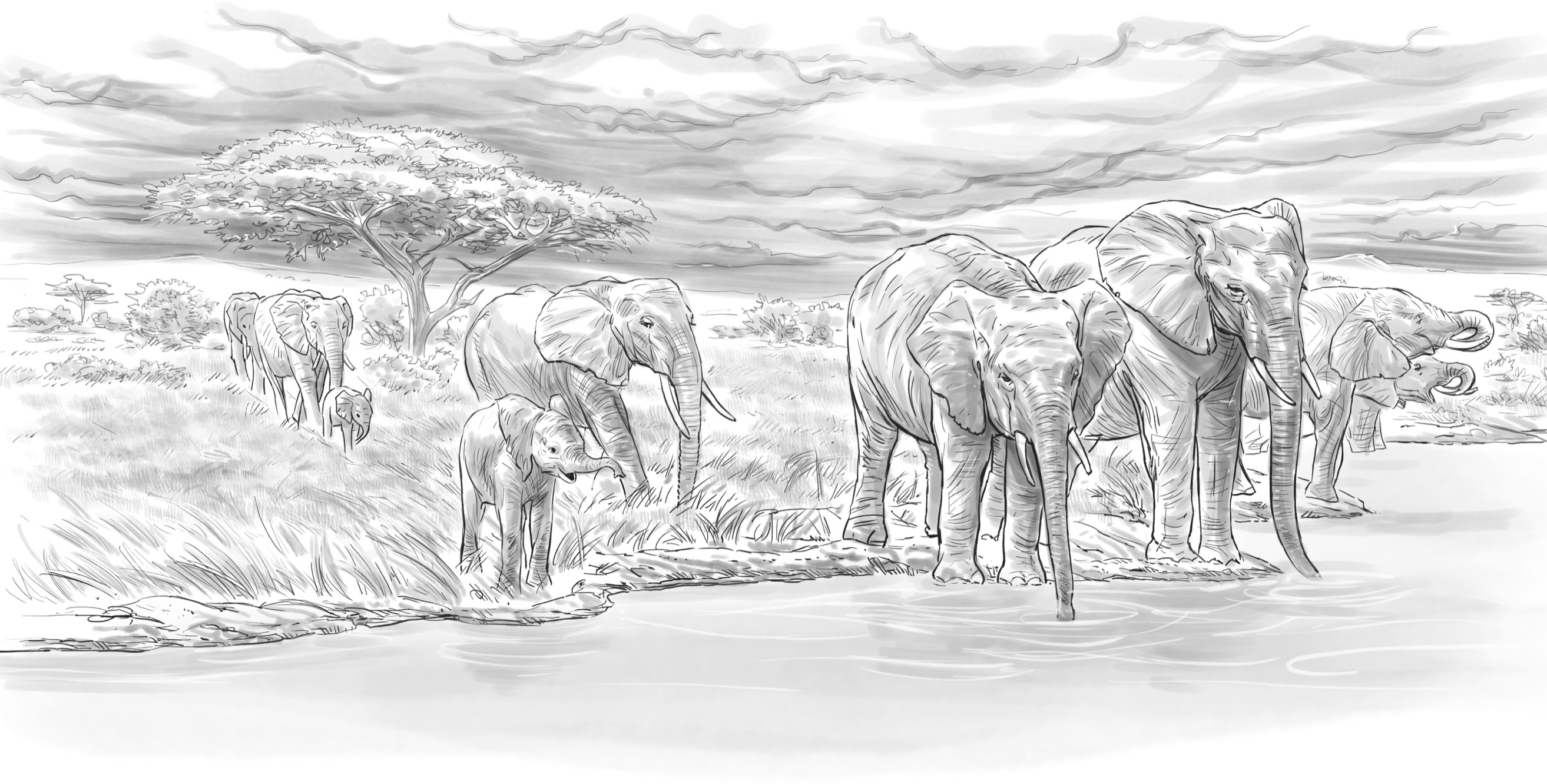
To the north and west is the savanna, grasslands with trees here and there. Some areas of the savanna are more heavily forested. Here, only giraffes can feed on the tallest leaves in the trees. A number of small rivers, lakes, and swamps dot the park.

Font size:
Interval:
Bookmark:
Similar books «Where Is the Serengeti?»
Look at similar books to Where Is the Serengeti?. We have selected literature similar in name and meaning in the hope of providing readers with more options to find new, interesting, not yet read works.
Discussion, reviews of the book Where Is the Serengeti? and just readers' own opinions. Leave your comments, write what you think about the work, its meaning or the main characters. Specify what exactly you liked and what you didn't like, and why you think so.

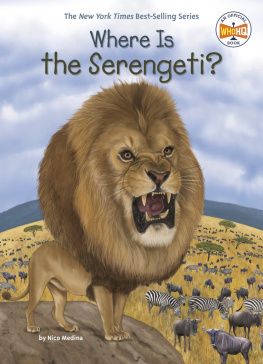



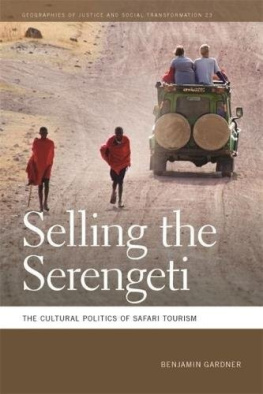


![Daniel D. Gutierrez [Daniel D. Gutierrez] - Machine Learning and Data Science: An Introduction to Statistical Learning Methods with R](/uploads/posts/book/119585/thumbs/daniel-d-gutierrez-daniel-d-gutierrez-machine.jpg)
